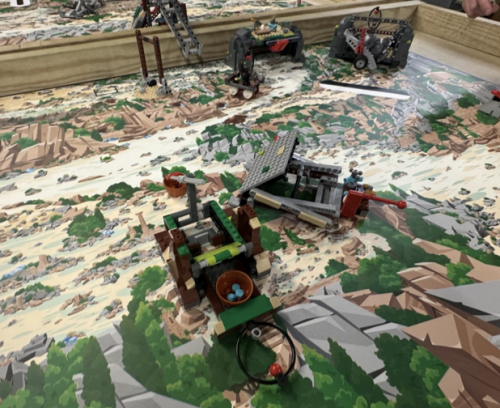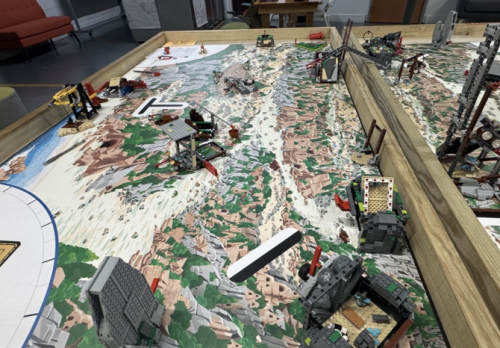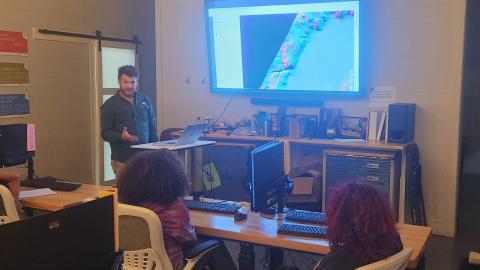ILC in the Field: Robotics, Archaeology, and Young Minds in Motion
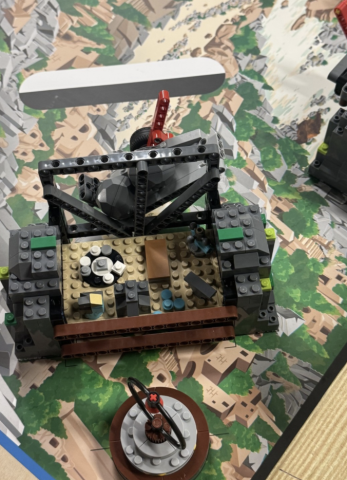
Last month I stepped out of the office and into the home turf of New Orleans youth robotics. This trip felt like the Innovative Learning Center doing what it does best, carrying technology, pedagogy, and curiosity out into the community. With Operation Spark and the Robotics Club hosted at New Orleans Center for Creative Arts (NOCCA), I spent an evening with students who are building, programming, testing, breaking, fixing, and smiling their way through a global LEGO robotics competition. This season’s theme is archaeology, which could not be better suited to my background in Maya archaeology and my day job teaching AI and instructional technology. I was invited to give a talk on archaeology and technology, then I brought a cart full of Oculus Meta Quest headsets for a hands-on virtual expedition across the ancient world. We talked. We built. We explored. We learned.
Setting the Stage: LEGO Meets Engineering
Here is the competition in a nutshell. Each year LEGO and the organizers release a fresh map with custom challenges, not a recycled set from ten seasons ago. Students assemble mechanical modules that sit on the map. They also build a robot that they program to run a route on its own. The robot travels to a station, activates a mechanism, collects a token, triggers a lever, nudges a mine cart, or retrieves a delicate piece without knocking the whole thing over. Each clean task earns points. The score depends on accuracy, sequence, and reliability. The work looks like a carnival of plastic parts and tiny rubber tires, but underneath the bright colors is serious systems thinking.
This year’s theme is archaeology. The modules mirror problems from the field. A collapsible shaft that punishes clumsy movement. A mine cart that demands precise triggering. An artifact retrieval puzzle that rewards careful planning. The map invites the students to confront fragility and risk. If you treat the module like a brick wall, you lose points. If you treat it like an ancient textile, you stand a chance.
I opened my session by introducing archaeology as a scientific craft. Field survey, excavation, stratigraphy, material culture, lab analysis, interpretation. We covered why context matters, how meaning is built up layer by layer, and why archaeologists try to reveal patterns without destroying what makes those patterns meaningful. We talked about technology that helps us do this work better. Lidar that sees through canopy. Drone mapping that stitches precise models. Rovers that peer into tight passages without prying up a single stone. Photogrammetry that builds memories in 3D so we do not rely only on a field notebook and a tired brain.
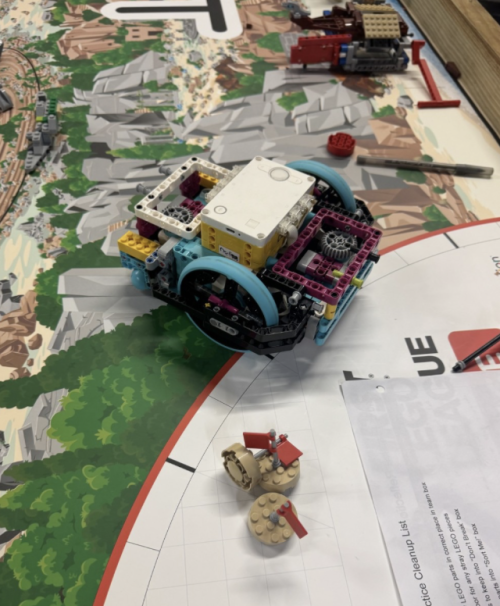
Operation Spark and NOCCA: A Bridge With Two Strong Ends
Operation Spark has been a steady force for tech education in New Orleans. Many Tulane students pass through their boot camps on the way to advanced work. They show up in my courses with a practical mindset and a habit of finishing what they start. The partnership with NOCCA, a place that nurtures creativity in every dimension, gives the club an environment full of energy. You can feel it when you walk in. The students carry notebooks and open minds. They tinker. They try. They compare strategies and share discoveries without acting like trade secrets are at stake.
The club’s organizer, Greg Thompson , layers the season with more than robot runs. Because the theme is archaeology, he brings in guest speakers, museum visits, and hands-on sessions that connect mechanisms to meaning. The students do not just drive a robot over a map. They connect what they are building to why people build and how we understand the past. That is the kind of context that sticks.
From Maya Ruins to Robotics Tables: Why Archaeology Belongs Here
People sometimes blink when an archaeologist walks into a robotics club. It fits. Archaeology and engineering share a mental habit. You study a system. You hypothesize. You test. You keep a record. You change one variable at a time. You respect your materials. You take things apart only when you must and then you put them back together in your notes so future you can remember what happened.
I spoke about how archaeologists peel back layers and how those layers hold stories. We looked at how technology helps us reveal patterns without gouging the site. We talked about new questions that technology allows us to ask. What if a small robot could shimmy into a tunnel, stabilize itself, and recover a sample without kicking dust onto a painted surface. What if a sensor could detect subtle density changes that mark a buried wall. What if a drone could map a low mound in a marsh within minutes, not weeks, so field time could be spent on analysis instead of tape-measure calisthenics.
The Pedagogical Thread: What This Means For ILC
The ILC exists to bring technology to teaching and teaching to technology. The center supports faculty, courses, programs, and projects across Tulane. I tend to leave campus to bring this knowledge to the community. An evening in a robotics lab is not a side quest. It is the same mission in a different room. We celebrate active learning. We cherish experiments that go right and experiments that go sideways.
Now for the second half of the evening, and the part that felt most ILC of all.
Bringing ILC Tech Into the Room: Virtual Reality Archaeology
The Innovative Learning Center maintains a library of instructional technology. Among the most compelling are our Oculus Meta Quest headsets. I loaded a set into the trunk, brought them to NOCCA, and set up exploration stations around the room. The app we used is called Wonder. Think Google Earth in virtual reality, with Street View style scenes that place the student on the ground. You look around and you are there. Walk forward, pivot, look up, look down, and the site wraps around you. You can feel the space with your eyes. That feeling matters.
Each headset started at a different site. We built a world tour that fit the archaeology theme.
Machu Picchu, terraces stepping down the mountainside.
The Great Pyramid of Giza, a geometry lesson the size of a city block.
Chichén Itzá, where El Castillo throws shadows that play with the sun.
Petra, corridors cut from stone that looks like folded cinnamon.
The Great Wall of China, a line that pretends it can hold the world together.
The Roman Colosseum, a bowl for sound, spectacle, and time.
We ended at home. Poverty Point in north Louisiana, one of the most remarkable earthwork complexes in North America. The students walked the mounds, stood on top, and looked out across curves that were built by hands and baskets and patience. Seeing a world site is good. Seeing a Louisiana site that stands shoulder to shoulder with any monument on Earth is better. That closing station connected their curiosity to their home ground.
When a group finished a VR station, they returned to their table with new questions. How big is a step at Chichén Itzá. How steep is the passage inside the Great Pyramid. How far can you see from the top of the Great Wall. Scale turns into numbers when you have a body in the scene, even a virtual one.

Why VR Belongs Beside the Robot
The robots taught precision and planning. The VR taught context and scale. Together they taught systems. A mechanism makes sense when your brain understands the world it lives in. A claw that grips an artifact gently makes more sense after you have stood inside a fragile chamber, even if the chamber is digital. A route that respects a collapse zone makes more sense after you have watched a shaft narrow and darken in front of you. VR is not a replacement for dirt and stone. It is a lens that sharpens judgment when your hands return to code and gears.
From a pedagogy standpoint, VR also widens the door. Not every student will fall in love with a line of Python. Some will. Others light up when they feel a place. They carry that feeling back to the table where they solder a wire straight, where they nudge a sensor into alignment, where they shave one second from a run. The more ways we offer a concept to the mind, the more likely the mind can grab it.
Archaeology as a Mindset
Archaeology and robotics share a core habit. Respect the known. Study the unknown. Interfere gently. Use tools that enlarge your senses. Write down what you did so someone else can understand it. I call archaeologists denim-jean scientists. We work in sun and mud and noise. We still follow the scientific method. Hypothesis, method, observation, analysis, conclusion, revision. The uniform has pockets.
In the talk we looked at material culture, where an object draws meaning from where it was found, what sits above it, what sits below it, and what sits beside it. We talked about destructive sampling and how technology reduces the need to cut when a scan can reveal the same information. We looked at lidar images that make a city bloom out of forest. We looked at drones that map a site before camp coffee cools. The students asked how small a rover could be and still be useful. I said smaller than you think and bigger than a gnat. The point is not to be tiny. The point is to be clever and gentle.
Equal Light, Two Halves, One Night
I promised the club that I would do two things. First, offer a clear and honest talk about archaeology, anthropology, and the tools that make a difference in the field. Second, bring ILC technology that gives them a new way to see the world they are studying. The evening kept both promises. The talk gave the competition meaning. The VR gave the meaning a body. Each half fed the other. If we had done only one, it would have been a good night. Doing both turned it into a memory.
The ILC Connection, Stated Plainly
This work fits the Innovative Learning Center because it serves learning wherever learning happens. We support faculty, courses, and students on campus. We also support learners who are two, five, or ten years away from Tulane. The future shows up in increments. If a student in that room now decides to study engineering, archaeology, computer science, design, or education later, then this outreach did real work. If a student does not pick any of those fields but carries a habit of careful inquiry into another path, that counts too.
Outreach like this also reveals a pattern we should repeat.
Bring university tools to the community, not just the other way around.
Pair content with experience, not a lecture with a yawn.
Treat disciplines as neighbors who share a fence and a lawn.
Let students touch complexity early, with supervision and kindness.
Remember that fun is not the enemy of rigor.
Reflections and Next Steps
Operation Spark deserves thanks for the invitation. Greg Thompson deserves thanks for building a program that values curiosity. NOCCA provides a space where discovery feels normal. The students deserve thanks for showing up with good questions, patient hands, and an appetite for trying again. I look forward to the next collaboration.
